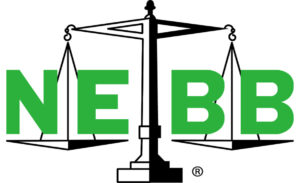Posts by Miles Ryan
Tall, Vertical Instrumentation Piping in Central Utility Plants
Miles Ryan, P.E., writes a monthly column in Engineered Systems Magazine on Building Commissioning. Read June’s column below: Central utility plants often have much higher ceilings than you see in a typical mechanical room. Accordingly, central plant piping is often suspended much higher above the floor as well. Instrumentation used for measuring pressures in such…
Read MoreA Passion for Plumbing
Miles Ryan, P.E., writes a monthly column in Engineered Systems Magazine on Building Commissioning. Read May’s column below: “Other people’s s*** is my bread and butter.” That opening statement immediately captured the attention of all the students in a metal shop class back when I was in high school. It came from a local plumbing…
Read MoreCommissioning Chilled Water Piping Insulation Systems
Miles Ryan, P.E., writes a monthly column in Engineered Systems Magazine on Building Commissioning. Read April’s column below: Chilled water piping insulation is not a typical system-to-be-commissioned listed in any RFP from a potential client. Unless your client has been burned in the past by poor installation of such piping insulation. I have such a…
Read MoreSoftware vs. Hardwired Interlocks: Part II
Miles Ryan, P.E., writes a monthly column in Engineered Systems Magazine on Building Commissioning. Read March’s column below: Last month’s column introduced the concept of an interlock. An interlock is a dependency between two processes. Process 2 cannot operate unless Process 1 is in a certain state. For example, if a supply air duct static…
Read MoreSoftware vs. Hardwired Interlocks: Part I
Miles Ryan, P.E., writes a monthly column in Engineered Systems Magazine on Building Commissioning. Read February’s column below: The devil is in the details. This especially runs true when it comes to the automation of HVAC systems. The slightest nuances, if misunderstood, can have devastating effects. One prime example is the importance of understanding the…
Read MoreInadequate Project Scheduling, Premature Functional Testing, and End-of-Project Chaos
Miles Ryan, P.E., writes a monthly column in Engineered Systems Magazine on Building Commissioning. Read January’s column below: A very common task incorporated into a commissioning process during the early stages of construction is schedule coordination. The task includes the commissioning provider working with the construction team to ensure activities and milestones of interest to…
Read MoreUnrepresentative DAT Readings Downstream of VAV Boxes
Miles Ryan, P.E., writes a monthly column in Engineered Systems Magazine on Building Commissioning. Read December’s column below: For years, the conventional VAV control sequence included the reheat valve controlling directly to space temperature. More and more often, discharge air temperature (DAT) sensors are now being installed, and the reheat valve is specified to control…
Read MoreHow New Cx Providers Can Bring Value to Project Teams on Day 1
Miles Ryan, P.E., writes a monthly column in Engineered Systems Magazine on Building Commissioning. Read November’s column below: Our firm recently hired a new employee. He was new to the field of commissioning. In prep for an upcoming, company-wide meeting, we were asked to each bring one piece of advice for him. I apparently thought…
Read MoreNC NEBB Recertification Seminar Presentation
North Central National Environmental Balancing Bureau Recertification Seminar By: Miles Ryan, P.E / October 10, 2024, 11:15 AM Doubletree – Roseville, Minnesota Pitfalls in High Rise Building Pressure Control Miles Ryan, P.E., will be presenting on the pitfalls in high rise building pressure control. Accurate readings of building pressures at various elevations in high rise buildings…
Read MoreFilter Differential Pressure Alarming: Do it right or not at all!
Miles Ryan, P.E., writes a monthly column in Engineered Systems Magazine on Building Commissioning. Read October’s column below: BAS monitoring of the differential pressure across a filter within an air system is commonplace. The differential pressure across the filter will increase as the filter gets loaded. If it gets too high, an alarm can be…
Read More